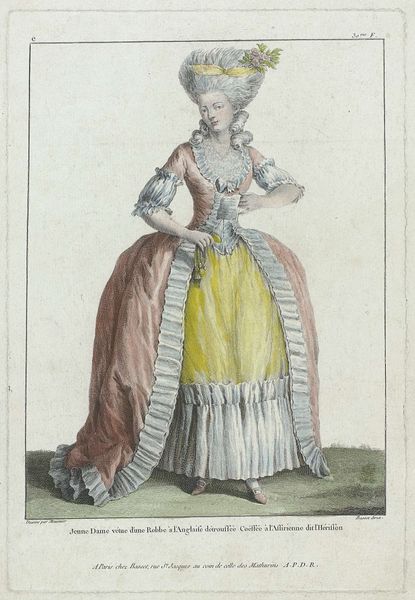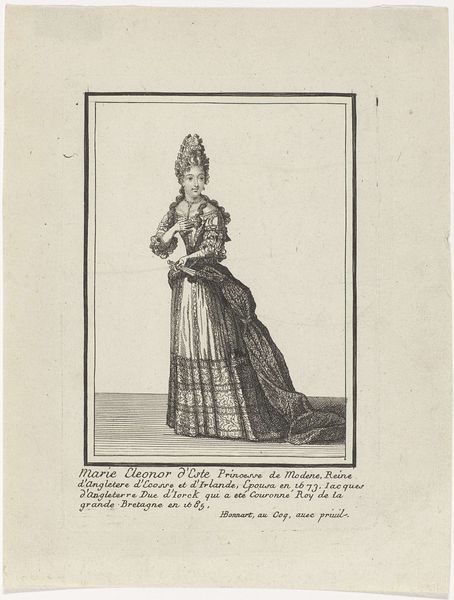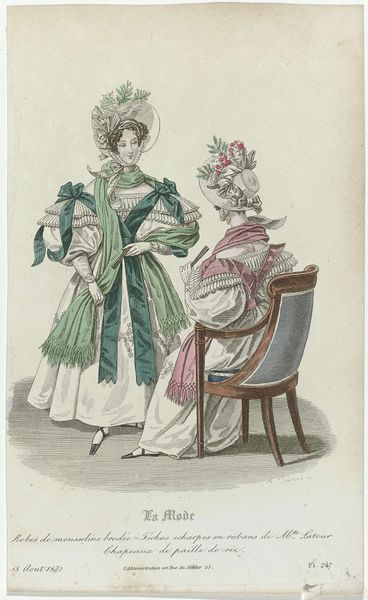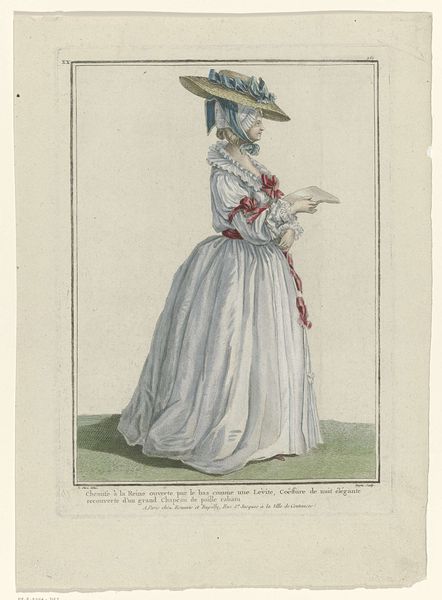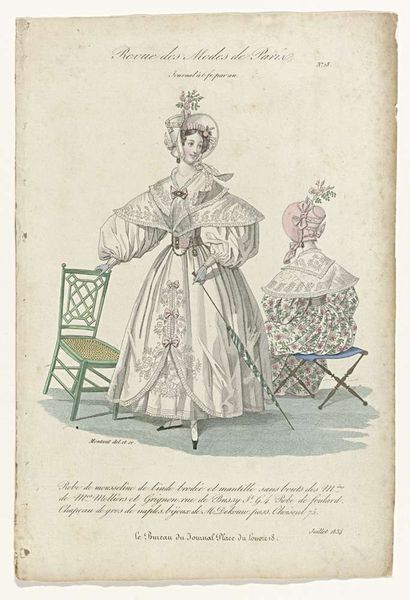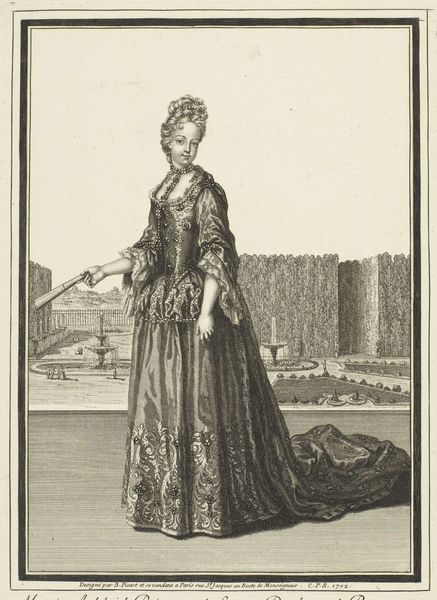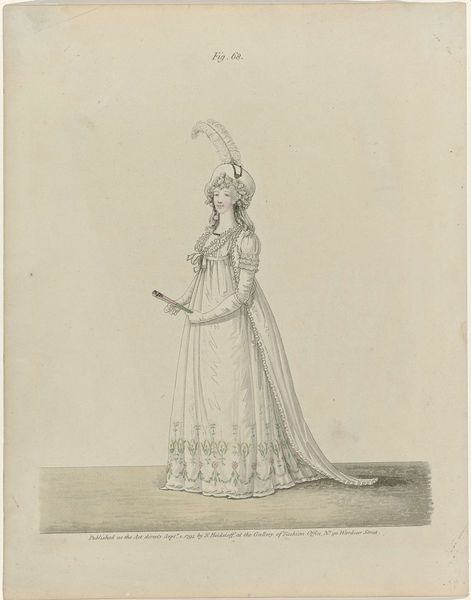
print, engraving
#
portrait
#
baroque
# print
#
figuration
#
historical fashion
#
line
#
history-painting
#
academic-art
#
decorative-art
#
engraving
Dimensions: height 277 mm, width 196 mm
Copyright: Rijks Museum: Open Domain
Curator: Oh my! The drama, the decadence... this Baroque sensibility just bursts right out! Editor: Indeed! What you’re reacting to is "Henriette Stuard d'Angleterre, Princesse de Danemarck," an engraving from between 1688 and 1729 by Robert Bonnart, now held at the Rijksmuseum. It’s a striking example of portraiture during that period. Curator: "Striking" is one word. The towering fontange hairstyle alone deserves a sonnet! There's something playful here, even amidst all the aristocratic formality. Editor: Playful perhaps, but within very defined structures of power and representation. Consider Henriette’s positioning—the very conscious display of wealth through clothing, fabric, and jewels. These weren’t just fashion statements. Curator: Of course, it's visual storytelling. But also, think of the weight of those clothes, physically and metaphorically! That heavy, gilded gown... It's like she's wearing her status, carrying the weight of expectations. Does she look thrilled, though? Mmm, not really! She's on display! Editor: Precisely! Think of how class and gender intersect in this portrait. Henriette’s value was tied to her lineage and her capacity to produce heirs—her body became a site of political negotiation. This print disseminates that ideal further. The original image would only be seen by a small circle. Curator: I do appreciate her fan though. I mean she’s almost coquettish as the background blends with her. Do you think the placement of the painting is supposed to mean anything? Or that she needs one due to being overheated under that headdress?! Editor: The painting’s backdrop serves as both a picturesque complement to Henriette’s fashion and also as an element of the grand mise-en-scène of the court. Each element meticulously designed and employed as messaging. Curator: It really is! It makes you wonder what stories are concealed beneath that exterior... Who was the person *beneath* all those layers? And can you ever really separate the personal and political? Editor: These questions drive our engagement, I believe. By unpacking the symbolism and social context within "Henriette Stuard d'Angleterre, Princesse de Danemarck," we reveal just how intricately bound identity and representation were then – and arguably, still are now.
Comments
No comments
Be the first to comment and join the conversation on the ultimate creative platform.


